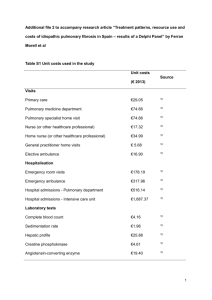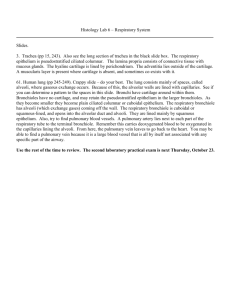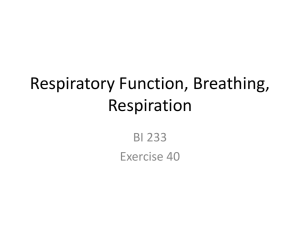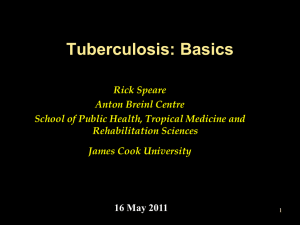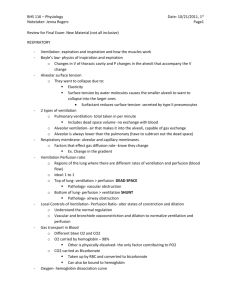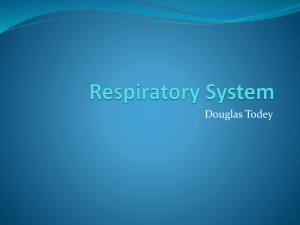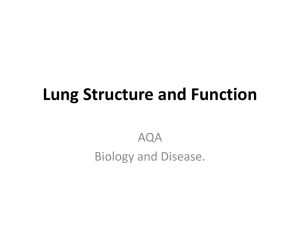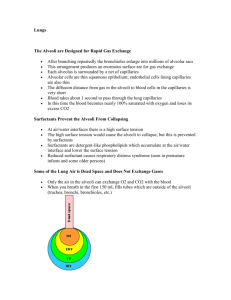Answers to Review Questions
advertisement
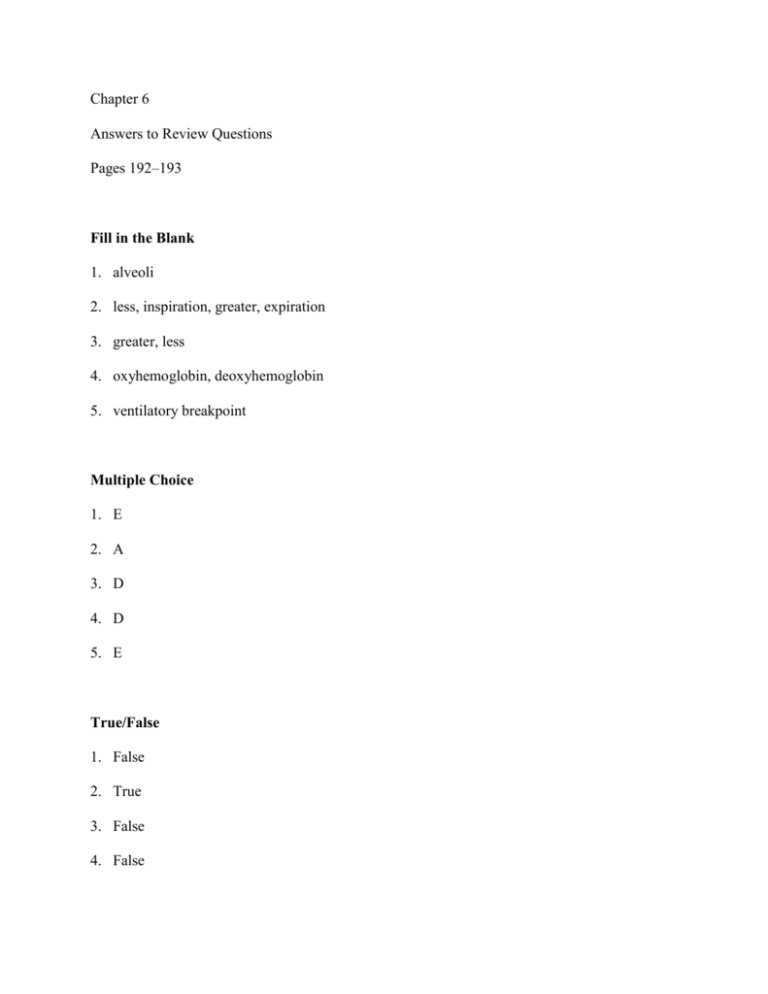
Chapter 6 Answers to Review Questions Pages 192–193 Fill in the Blank 1. alveoli 2. less, inspiration, greater, expiration 3. greater, less 4. oxyhemoglobin, deoxyhemoglobin 5. ventilatory breakpoint Multiple Choice 1. E 2. A 3. D 4. D 5. E True/False 1. False 2. True 3. False 4. False 5. True Short Answer 1. The millions of saclike alveolar clusters located at the ends of the respiratory bronchioles provide tremendous surface area (approximately the size of a tennis court) for gas exchange. Pulmonary diffusion is further aided by a thin respiratory membrane composed of the membrane of the alveolar cells and the cells making up the wall of the capillary. So, the respiratory membrane through which gases must pass to move between the blood and the air within the alveoli is only two cells thick . Moreover, each alveolus is wrapped in capillaries, which aids in increasing the surface area available for pulmonary diffusion. 2. Air moves into and out of the lungs because of pressure differences between the atmosphere and the lungs created by changes in the volume of the thoracic cavity. Lung volume is changed as the volume of the thoracic cavity changes; the lungs adhere to the inner surface of the thoracic cavity and diaphragm because of the intrapleural pressure created by a fluid in the pleural cavity. 3. During exercise, pulmonary ventilation increases up to 20 times from rest. As pulmonary ventilation increases during exercise, one starts to breathing through the mouth. Compared with the nasal passages alone, incorporating breathing through the mouth provides a larger diameter conduit for airflow. The diameter or cross-sectional area of the airway is the most important factor affecting resistance to airflow. So, with a larger-diameter conduit for airflow resistance to flow decreases and it is easier to inspire and expire. 4. Blood flow through the pulmonary circulation and through the systemic circulation are equivalent; however, blood pressure within the pulmonary circulation is very low compared with the systemic circulation. The low pulmonary circulating blood pressures are caused by lower vascular resistance within the pulmonary circulation, which helps to protect the thin respiratory membrane from damage from high blood pressure. Critical Thinking 1. Chemoreceptors are located within the medulla, carotid arteries, and the aortic arch and respond to chemical changes. Central chemoreceptors are located within the medulla and are especially sensitive to changes in acidity of the cerebral spinal fluid. The major cause of increased acidity within the cerebral spinal fluid is increased carbon dioxide concentration, which quickly increases the hydrogen ion concentration because of the bicarbonate reaction. The peripheral chemoreceptors of both the aortic and carotid bodies are sensitive to changes in blood acidity and partial pressure of carbon dioxide; however, only the carotid bodies are sensitive to changes in the partial pressure of oxygen. The location of the aortic bodies allows monitoring of blood that has just returned from the lungs and should be fully oxygenated. The location of the carotid bodies allows monitoring of the blood and oxygen supply to the brain. This is important because the brain is the organ of the body most sensitive to a lack of oxygen; without a sufficient oxygen supply to the brain, fainting will occur within a matter of seconds. If a chemoreceptor senses increased partial pressure of carbon dioxide, decreased partial pressure of oxygen, or increased acidity, as will occur during exercise, an increase in pulmonary ventilation will be stimulated. Increased pulmonary ventilation increases the amount of carbon dioxide leaving the blood and being expired as well as the amount of oxygen diffusing into the blood from the interior of the alveoli. Decreases in these same measures would stimulate a decrease in pulmonary ventilation. Changes in pulmonary ventilation caused by the chemoreceptors match the body’s needs to expire carbon dioxide produced by metabolism and oxygen needed for aerobic metabolism. 2. At sea level PO2 is 159.1 mm Hg and PCO2 is 0.2 mm Hg. However, within the alveoli, PO2 decreases to 105 mm Hg and PCO2 increases to 40 mm Hg. These changes are caused by several factors. One function of the nasal passages and pulmonary conduits is to humidify the inspired air; at the alveoli the relative humidity is 100%. This would tend to decrease the partial pressure of all gases except water vapor because, according to Dalton’s law, the total pressure of a gas mixture is equivalent to the sum of all the pressures of all the gases that compose the mixture. So, if the partial pressure of water vapor increases, the partial pressure of all other gases decrease. Additionally, PO2 is also decreased because of the mixing of atmospheric air with a high PO2, with air left within the lungs after exhalation that has a lower percentage of oxygen because oxygen is diffusing from the air within the alveoli into the blood. These two factors decrease PO2 to 105 mm Hg in the alveoli. Air within the alveoli has a high PCO2 because carbon dioxide is diffusing into the air in the alveoli from the blood. The net effect of humidifying the air and mixing inspired air with the air left in the alveoli after exhalation in an increase in PCO2 compared to atmospheric air, resulting in a PCO2 of 40 mm Hg.

